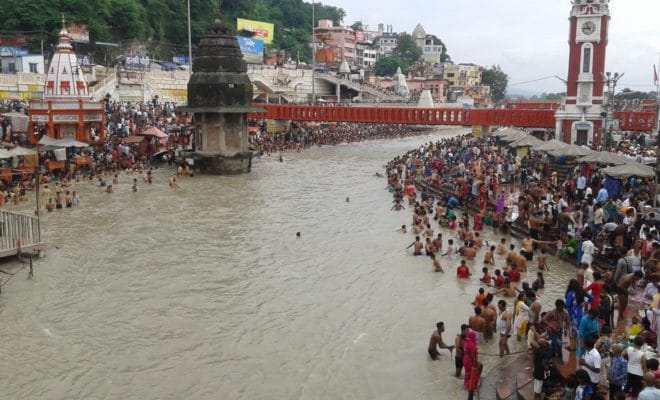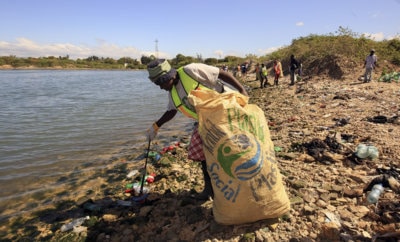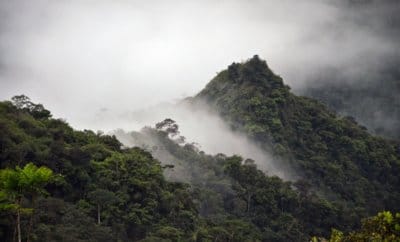Books
3 Jumbo Jets Worth of Children Die Daily Due to Ganga Pollution: Victor Mallet

Ganga river at Haridwar
Wikimedia Commons
The Indian government had vowed to clean the Ganga, but not much has been done yet, journalist-author Victor Mallet says in his recent book.
“It is the most important river in the world,” says Victor Mallet, the author of River of Life, River of Death: The Ganges and India’s Future. Ganga, the holy river of the Hindus, drew his attention when Mallet spent four years in India, covering politics, business and environment in the country for the Financial Times newspaper.
“I have been interested in rivers and various environmental issues and the fact that Ganga, which is considered holy for millions of Hindus, is abused and polluted and is now at risk due to the high level of pollution struck me. I think it is an amazing story,” he tells Little India over telephone from Hong Kong, where he is currently based as the publication’s Asia News editor.

Victor Mallet (Pic credit: Ayesha Sitara)
Mallet’s research on the current state of the river that meanders through a stretch of 2,525 km across India took him to its origin, Gaumukh, and its various pitstops. He traveled all the way from Uttarakhand to Kolkata, visiting the major towns like Patna and Varanasi set on its banks, and its various tributaries — Ram Ganga, Yamuna and Chambal. “It was a great journey, it speaks volumes not only about the river, but also about India,” he says.
The Hindu mythology says that bathing in the Ganga would wash away one’s sins. However, contrary to the mythologies, a dip in the holy river today could land one at the doctor’s chamber — such is the level of pollution in the Ganges.
After speaking to various spiritual leaders across the country, Mallet concluded that while a river is considered a life-giving force, it is erroneous to assume that any physical filth thrown into it wouldn’t affect the waters. A river could be a life-giver, but it can also ring a death knell for civilization if it is abused and polluted — hundreds of children die every day, he points out, due to diarrhea and waterborne diseases after consuming the untreated water from the Ganga.
“Three jumbo jets worth of children are dying every day but nobody takes notice because it happens across villages,” says Mallet. “If there was a plane crash we would notice.”
In Delhi, the Yamuna is full of raw sewage and toxic effluents, and Mallet does not mince words while describing its waters — black, dead, and poisonous. In fact, the Central Pollution Control Board has said that the amount of bacteria in the Yamuna is half a million times more than the acceptable level. It can be assumed that the toxins in the river flow all the way down to Mathura, Agra, and then eventually merge into the Ganga at Allahabad.
The Ramganga, which originates in Pauri Garhwal, is beautiful and clean, he says. After passing through the Jim Corbett National Park, it reaches Moradabad, a small town that is a heavy source of pollution. Brass foundries and e-waste recycling centers dump dangerous pollutants, including carcinogenic heavy metals, into the river at the city in Uttar Pradesh.
The area before the river reaches Moradabad is abundant in flora and fauna, with fish and wildlife, including tigers, sambar and deer. But soon, the river becomes incapable of sustaining life. “You can see drains being channeled into the river, dumping poisonous effluents into its waters,” Mallet elaborates, calling it depressing and disgraceful at the same time.

The major pollutants are untreated sewage from humans, industrial waste from factories, pesticide and fertilizer run-off, and to think that the same water is being extracted for irrigation can be disturbing. “As compared to other rivers in the world, the Ganga is better, but some of its tributaries need immediate attention,” he says, adding, “When I was a child my mother used to say that if you fall into the Thames your stomach would have to be pumped because it is poisonous.”
Mallet, however, feels there is hope for the Ganga, as cleaning a river can be a daunting task, but it is not impossible. The Thames in London, where he spent some years of his childhood, the Rhine in Europe and the Chicago river were all severely polluted, but efforts to help clean them were successful.
Despite plans to clean up Ganga by the Narendra Modi government and several previous governments, not much has been done. Modi allocated $3 billion for the Swachh Ganga Abhiyan. Though it was one of the highlights of his manifesto in the 2014 elections, and featured regularly in his speeches after his big win, nothing substantial has come out of his vows.
While acknowledging that it is difficult to get things done in a democracy this size, Mallet asserts that the government has to take some action since India cannot afford to neglect the health of the river that is so deeply attached to public health. India has the funds to clean the river — the World Bank allocated $1 billion and Japan is ready to lend money — and all it has to do is stop polluting it and it would clean itself. Cleaning up the river will create jobs and save lives, he adds. “Nobody will oppose the move to clean the Ganga,” he says.
Mallet, however, is aware of the criticism that may come his way. “People may say, ‘You are a westerner, you destroyed your rivers getting rich, and it’s India’s time to grow its economy’,” he says. “But as a journalist or writer I’m convinced I have said what I have seen.”




You must be logged in to post a comment Login